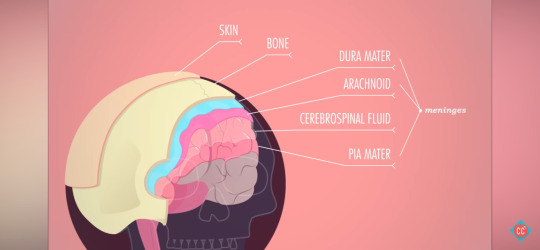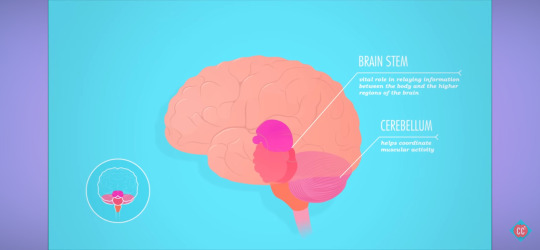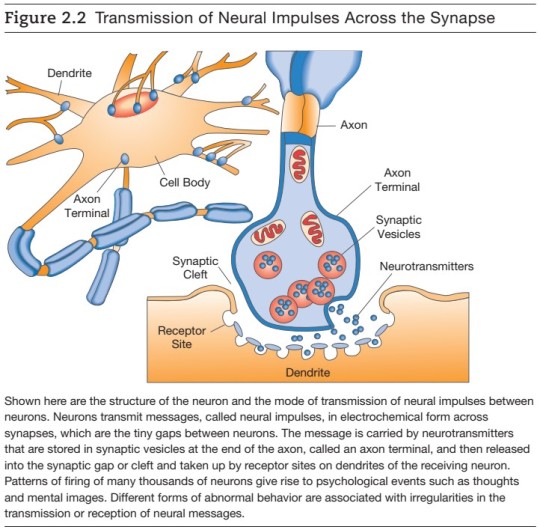#Protection Relay Coordination Study
Explore tagged Tumblr posts
Text
In this blog, we provide an overview of the Protection Relay Coordination Study, explaining its importance in ensuring electrical system safety and reliability. Learn how proper coordination minimizes power outages and protects equipment.
Click to Read More...
0 notes
Text
A Comprehensive Guide to Power Systems Protection for Engineers
Introduction:
Power systems protection is a critical aspect of electrical engineering that focuses on safeguarding electrical equipment, personnel, and the power grid from faults, failures, and abnormal operating conditions. This comprehensive guide aims to provide engineers with valuable insights into key principles, techniques, and best practices in power systems protection.
1. Understanding System Operation and Fault Types:
Before delving into protection strategies, it is essential to have a solid understanding of how power systems operates and the various types of faults that can occur. This includes studying system components, such as generators, transformers, transmission lines, circuit breakers, relays, and protective devices. Familiarity with fault types like short circuits, open circuits, ground faults, and transient overvoltages is crucial as a foundation.
2. Principles of Protection Coordination:
Effective power systems protection requires proper coordination among protective devices. Engineers must understand the concept of selectivity to ensure that only the device closest to a fault operates, minimizing disruption to the rest of the system. Proper coordination involves selecting appropriate current settings, time delays, and coordination curves for relays and circuit breakers.
3. Relay Device Fundamentals:
Relays are an integral part of power systems protection, serving as the first line of defense against electrical faults. Engineers should have a thorough knowledge of different relay types, including overcurrent relays, differential relays, distance relays, and directional relays. Understanding their operating principles, features, and limitations aids in choosing the most suitable relays for specific applications.
4. Protective Device Coordination:
Coordinating protective devices within a system is critical to maintaining stability and preventing cascading failures during faults. Engineers must carefully analyze and design protection schemes that consider factors such as fault impedance, fault currents, relay response characteristics, and coordination margins. Advanced techniques like time grading and impedance grading can be employed to achieve optimal coordination.
5. Fault Analysis and System Modeling:
Performing fault analysis and system modeling helps engineers gain insights into power flow, fault currents, voltage profiles, and system stability. Engineers must be proficient in using software tools like ETAP, PSCAD, and DSA Tools to accurately simulate fault scenarios and assess the performance of protection schemes. Detailed knowledge of system modeling techniques enables engineers to make informed decisions regarding relay settings and coordination.
6. Communication-Based Protection:
With the increasing complexity of modern power systems, communication-based protection plays a crucial role in maintaining reliability. Knowledge of communication protocols such as IEC 61850, GOOSE (Generic Object-Oriented Substation Event), and SCADA (Supervisory Control and Data Acquisition) systems is essential for engineers to design and implement advanced protection solutions that utilize real-time data exchange between substations and control centers.
7. Integration of Automation and Control Systems:
Incorporating automation and control systems into power systems protection enhances operational efficiency and reduces response time during faults. Engineers need to understand concepts like remote terminal units (RTUs), programmable logic controllers (PLCs), and human-machine interfaces (HMIs). Familiarity with protocols like Modbus, DNP3 (Distributed Network Protocol), and OPC (OLE for Process Control) enables seamless integration of protection systems with wider control infrastructure.
8. Commissioning, Testing, and Maintenance:
Implementing effective protection strategies requires thorough commissioning, testing, and maintenance procedures. Engineers should be well-versed in practices like primary injection testing, secondary injection testing, relay calibration, fault simulation, and periodic inspections. Adhering to manufacturer guidelines, industry standards, and safety protocols ensures equipment reliability and optimal performance.
9. Access to Resources and Industry Awareness:
Staying connected with organizations like the IEEE (Institute of Electrical and Electronics Engineers) and IET (Institution of Engineering and Technology) is crucial for access to valuable resources. Engineers should actively seek research papers, technical articles, conferences, and networking opportunities. Staying informed about relay technology advancements from prominent manufacturers aids in adopting the latest protection techniques.
10. Software Applications for Enhanced Protection:
Utilizing software applications is vital in power systems protection. Advanced tools like ETAP, PSCAD, and DSA Tools aid in relay coordination analysis, fault simulation, and system modeling. Acquiring proficiency in these common industry software packages enables engineers to design and optimize protection schemes effectively.
11. Compliance with Local National Codes:
Adhering to local national codes and regulations is paramount in power systems protection. Understanding and implementing specific electrical codes and standards relevant to the country of operation is crucial. Compliance ensures safe and reliable system design, installation, and operation aligned with legal requirements and best practices.
Conclusion:
By encompassing the principles, techniques, and best practices discussed in this guide, engineers pursuing careers in power systems protection can develop a strong foundation. Continuous learning, staying updated on industry advancements, and compliance with local national codes will ensure engineers can design, implement, and maintain robust and reliable protection schemes for the power grid and its critical assets.
The Author Biography: Qusi Alqarqaz
Qusi Alqarqaz is an experienced professional in power system protection, specializing in sharing knowledge and guiding young engineers. With a career spanning utility and oil and gas industries in Texas, New Mexico, and Qatar, he has amassed extensive industry experience.
Collaborating with leading manufacturers such as SEL, ABB, Siemens, Schneider, among others, Qusi has gained proficiency in a range of protective relays. He actively pursues continuing education, completing professional development courses with software providers including ETAP and Milsoft, enabling him to utilize advanced tools for power system analysis and protection design.
Qusi's dedication to staying up-to-date with industry advancements led him to pursue additional training. He completed professional development courses at Wisconsin University, equipping him with specialized knowledge crucial for working with high-voltage power systems. He also studied power generation extensively at Strathclyde University in the UK.
Qusi actively shares his knowledge through collaborating on large-scale projects and providing training sessions for professionals. Through his posts, he aims to offer guidance and mentorship for young engineers in power system protection. His practical advice and personal experiences will empower the next generation of experts in this field.
Contact the Author:
Qusi actively shares his knowledge through collaborating on large-scale projects and providing training sessions for professionals.
Qusi Alqarqaz
9 notes
·
View notes
Text
Ensuring Industrial Safety: The Role of Explosion Proof Classification and Relay Coordination Study
Industrial safety is a complex puzzle, and each piece—from hazard classification to electrical protection—must fit perfectly. Explosion proof classification lays the groundwork for preventing ignition in hazardous areas, while a Relay Coordination Study ensures that electrical faults are managed safely and efficiently. When these two elements are addressed together, they form a robust defense against both environmental and electrical risks. Companies that invest in these practices not only protect their people and assets but also ensure regulatory compliance and operational continuity. Safety, after all, is not just a requirement—it’s a responsibility.
0 notes
Text
Arc Flash Study
Arc flash incidents are among the most dangerous electrical hazards, posing severe risks to personnel and equipment. One critical factor that can significantly increase the risk of an arc flash event is relay miscoordination. Understanding how relay miscoordination impacts arc flash risk is essential for maintaining a safe and reliable electrical system. In this article, we will explore the link between relay miscoordination and arc flash risk and the role of an arc flash study in mitigating these hazards.
What Is Relay Miscoordination?
Relay miscoordination occurs when protective relays fail to operate in the correct sequence or time frame during a fault condition. This can result from:
Improper Relay Settings: Inaccurate configuration of relay parameters.
Inconsistent Coordination: Lack of coordination between upstream and downstream devices.
Aging or Outdated Relays: Old relays with slower response times or degraded performance.
System Changes: Modifications to the electrical system without updating relay settings.
When relay miscoordination occurs, faults are not cleared promptly, leading to prolonged fault duration and increasing the risk of an arc flash.
How Does Relay Miscoordination Increase Arc Flash Risk?
Longer Fault Duration When relays fail to operate as intended, the fault remains active for a longer period. The extended fault duration results in higher incident energy levels, making the arc flash more intense and hazardous.
Increased Incident Energy Incident energy is directly related to the duration of the arc flash. Miscoordination can lead to delayed tripping or failure to clear the fault entirely, allowing incident energy to accumulate and significantly increase.
Wider Arc Flash Boundaries The longer the arc persists, the more distance the dangerous energy can cover, expanding the arc flash boundary and increasing the area at risk.
Greater Equipment Damage Prolonged arc faults can cause severe damage to switchgear, circuit breakers, and transformers. This not only increases repair costs but also extends downtime.
Increased Risk to Personnel The primary concern with arc flash incidents is worker safety. Higher incident energy and extended arc duration dramatically increase the risk of severe burns or fatalities.
Importance of Arc Flash Studies
Performing an arc flash study is crucial to identifying potential hazards and ensuring that relay settings are optimized for safety. An arc flash study typically includes:
Short Circuit Analysis: Identifying fault current levels to determine arc flash potential.
Relay Coordination Studies: Verifying that relays operate in the correct sequence and within the desired time frame.
Incident Energy Calculations: Calculating the energy levels to determine the appropriate Personal Protective Equipment (PPE) requirements.
Mitigation Recommendations: Suggesting improvements to relay settings and coordination to reduce arc flash risk.
Best Practices to Prevent Relay Miscoordination
Regular Relay Coordination Studies: Conduct periodic reviews to ensure settings are still appropriate as system configurations change.
Update Relay Settings: Adjust settings to reflect new system designs or upgraded equipment.
Use Modern Digital Relays: Upgrade to advanced relays with faster response times and improved accuracy.
Routine Testing and Maintenance: Regularly inspect relays to detect potential malfunctions or outdated settings.
Integrate Maintenance Mode: Enable maintenance settings during routine operations to lower fault clearing times and reduce arc flash risk.
Conclusion
Relay miscoordination significantly increases the risk of arc flash incidents by prolonging fault duration and raising incident energy levels. Conducting comprehensive arc flash studies and relay coordination assessments helps identify and rectify miscoordination issues, ultimately enhancing personnel safety and system reliability.
0 notes
Text
ETAP Electrical Software | Power System Analysis & Design

ETAP Electrical Software: A Complete Guide for Engineers & Professionals
In the modern electrical engineering landscape, software tools play a crucial role in ensuring efficiency, safety, and reliability in power systems. One such powerful tool is ETAP (Electrical Transient Analyzer Program)—a widely used electrical engineering software for power system modeling, analysis, monitoring, and optimization. Whether you're an electrical engineer, a power system analyst, or a student looking to enhance your technical skills, learning ETAP electrical software can significantly boost your expertise and career prospects.
What is ETAP Electrical Software?
ETAP is an advanced power system analysis software used for designing, simulating, and managing electrical networks. It is widely utilized across industries such as power generation, transmission, distribution, industrial plants, and renewable energy sectors. The software provides real-time solutions for analyzing and optimizing electrical systems, ensuring efficiency and compliance with safety standards.
Key Features of ETAP Electrical Software
Load Flow Analysis – Helps in determining voltage levels, power losses, and system performance under different loading conditions.
Short Circuit Analysis – Identifies fault currents to enhance system protection and ensure safety.
Arc Flash Analysis – Evaluates arc flash hazards and ensures workplace electrical safety.
Relay Coordination – Assists in designing protection systems with optimal relay settings.
Transient Stability Analysis – Studies system behavior during disturbances to prevent power failures.
Harmonic Analysis – Detects and mitigates harmonic distortions affecting power quality.
Cable sizing and optimisation guarantees that the right cables are chosen for effectiveness and security.
Real-Time Monitoring & Predictive Analysis – Provides live data for system performance evaluation and predictive maintenance.
Why Should You Learn ETAP?
Industry Demand: Many industries, including power plants, utilities, and large-scale industrial facilities, rely on ETAP for their electrical system management.
Enhanced Career Prospects: Proficiency in ETAP increases job opportunities in electrical engineering, power distribution, and energy management sectors.
Better Decision-Making: ETAP enables engineers to design, analyze, and optimize power systems with accuracy, reducing risks and improving efficiency.
Compliance with Safety Standards: The software helps ensure adherence to electrical safety regulations, preventing system failures and accidents.
Who Can Benefit from ETAP Training?
Electrical Engineers
Power System Analysts
Energy Consultants
Substation Engineers
Industrial Electricians
Electrical Engineering Students
What You Will Learn in an ETAP Training Course
A structured ETAP training course covers both basic and advanced topics, such as:
Introduction to ETAP & User Interface
Creating and Modeling Electrical Networks
Load Flow & Short Circuit Analysis
Protection & Relay Coordination
Arc Flash & Safety Analysis
Transient Stability & Motor Acceleration Studies
Harmonic Analysis & Power Quality Assessment
Project-Based Simulations & Case Studies
How to Get Started with ETAP?
Enroll in an ETAP Training Program: Many institutions offer online and offline ETAP training courses with hands-on project work.
Access Free Tutorials & Guides: Online resources, including YouTube videos and ETAP’s official documentation, can help beginners get familiar with the software.
Practice with Real-World Case Studies: Applying ETAP to actual electrical system challenges helps improve problem-solving skills.
Get Certified: Earning an ETAP certification boosts credibility and job prospects in the electrical engineering industry.
ph : +91-9500024134 Visit our website: https://www.cubikcadd.in/revit-training-in-coimbatore.html Ramnagar Branch, Coimbatore : https://maps.app.goo.gl/boAyupUoqtda9fXU6 Saravanampatti Branch, Coimbatore : https://maps.app.goo.gl/xrtknmSk76d8cnQV9 OMR Branch, Chennai : https://maps.app.goo.gl/HCpHhcFHGdKsPCPx7 Facebook: https://www.facebook.com/cubikcadd Instagram: https://www.instagram.com/cubikcadd Tiwtter: https://x.com/CubikCadd
0 notes
Text

In today’s industrial landscape, electrical safety is a top priority, making arc flash analysis services in India an essential requirement for workplaces dealing with high-power electrical systems. Arc flashes pose significant hazards, including severe burns, equipment damage, and even fatalities. To mitigate these risks, industries must invest in professional arc flash analysis services to enhance workplace safety and ensure compliance with safety regulations.
What is Arc Flash Analysis?
Arc flash analysis is a detailed study that assesses potential arc flash hazards within an electrical system. It identifies high-risk areas, evaluates the severity of potential arc flash incidents, and provides recommendations to improve electrical safety. Industries that require electrical hazard management, such as manufacturing plants, power stations, and data centers, must conduct an arc flash analysis to protect personnel and equipment.
Importance of Arc Flash Analysis Services in India
India’s industrial growth has led to increased energy consumption, making electrical safety a crucial factor in maintaining smooth operations. Arc flash analysis services in India help businesses comply with national and international safety standards, including IEEE 1584 and NFPA 70E. Key benefits include:
Worker Safety: Protects employees from severe injuries and fatalities caused by arc flash incidents.
Regulatory Compliance: Ensures adherence to electrical safety norms and legal regulations.
Equipment Protection: Prevents damage to electrical systems and reduces costly downtime.
Risk Assessment & Prevention: Identifies high-risk areas and implements corrective actions to minimize arc flash hazards.
Key Components of Arc Flash Analysis
Data Collection – Gathering information on electrical systems, including equipment ratings and configurations.
Short Circuit Analysis – Evaluating the electrical system to determine potential fault levels.
Protective Device Coordination – Analyzing the response of circuit breakers and relays to minimize arc flash risk.
Incident Energy Calculation – Assessing the amount of energy released during an arc flash event.
Arc Flash Boundary Determination – Defining safe working distances for personnel.
Labeling and PPE Recommendations – Providing safety labels and appropriate Personal Protective Equipment (PPE) recommendations for employees.
Industries That Require Arc Flash Analysis Services
Several industries must prioritize arc flash hazard assessment, including:
Power Generation & Distribution
Manufacturing & Heavy Industries
Oil & Gas Plants
Pharmaceutical & Chemical Industries
Data Centers & IT Infrastructure
Automobile & Aerospace Sectors
Choosing the Right Arc Flash Analysis Provider in India
When selecting a provider for arc flash analysis services in India, businesses should look for experienced professionals with a strong track record in electrical safety. Key factors to consider include:
Expertise in Electrical Engineering
Compliance with IEEE and NFPA Standards
Use of Advanced Simulation Tools
Detailed Reporting & Safety Recommendations
On-Site Training for Employees
Conclusion
Arc flash incidents can have devastating consequences, making arc flash analysis services in India a critical investment for businesses operating with high-voltage electrical systems. By conducting comprehensive arc flash studies, industries can protect their workforce, comply with safety regulations, and prevent costly equipment failures. Investing in professional arc flash analysis services is not just a regulatory requirement—it is a commitment to workplace safety and operational efficiency. SAS POWER TECH PVT.LTD
0 notes
Text
Ensuring the reliability of protection relays is crucial in safeguarding electrical systems
Protection relays play a pivotal role in safeguarding electrical systems, acting as the first line of defense against faults and failures. They are essential for the prevention of equipment damage, minimizing downtime, and ensuring the safety of personnel. Given the critical nature of their function, ensuring the reliability of protection relays is not just important—it is crucial. This blog delves into the key practices and considerations for maintaining the reliability of protection relays, with a focus on electrical commissioning & testing, transformer repairs, high voltage circuit breaker maintenance, and high voltage commissioning.
Electrical Commissioning & Testing
Electrical commissioning and testing form the foundation of reliable protection relay systems. Commissioning is the process of verifying that new equipment or systems meet specified requirements and function correctly. It involves comprehensive testing and validation of all components, including protection relays, to ensure they operate as intended under various conditions.
During electrical commissioning, a series of tests, such as functional tests, relay coordination studies, and system integration tests, are essential. These tests help identify potential issues before the system goes live. Regular testing should also be conducted post-commissioning to ensure ongoing reliability. Modern diagnostic tools and software can simulate fault conditions to verify the relay's response, ensuring it triggers appropriately to protect the system.
Transformer Repairs
Transformers are critical components in electrical systems, and their proper functioning is heavily dependent on reliable protection relays. During transformer repairs, it is essential to inspect and test the associated protection relays to ensure they are not compromised.
Repairs may involve replacing faulty components, addressing insulation breakdowns, or mitigating issues caused by overloading. Post-repair testing should include comprehensive checks on the protection relays to confirm they respond correctly to simulated fault conditions. This ensures that the transformer is adequately protected and that any future issues are promptly detected and addressed.
High Voltage Circuit Breaker Maintenance
High-voltage circuit breakers are integral to the stability and safety of electrical systems, particularly in industrial and utility settings. Their maintenance is vital for ensuring the reliability of protection relays. Circuit breakers interrupt the flow of electricity during faults, and they rely on protection relays to detect these faults accurately.
Regular maintenance of high voltage circuit breakers includes cleaning, lubrication, mechanical operation tests, and timing tests. Additionally, testing the protection relays in conjunction with the circuit breakers is critical. This can be achieved through secondary injection testing, where a simulated fault current is injected into the relay to verify its trip response. Ensuring that both the circuit breakers and their associated relays are in optimal condition is key to maintaining system reliability.
High Voltage Commissioning
High voltage commissioning is the final phase in the installation of high voltage equipment and systems. This process involves rigorous testing and validation to ensure all components, including protection relays, function correctly under high voltage conditions.
During high voltage commissioning, specialized tests such as high voltage withstand tests, partial discharge tests, and insulation resistance tests are performed. Protection relays are subjected to various fault conditions to verify their performance. Any discrepancies or malfunctions identified during this phase must be addressed before the system is put into operation. This thorough approach ensures that the entire high voltage system, including protection relays, operates reliably from the outset.
The reliability of protection relays is crucial for safeguarding electrical systems. Through diligent electrical commissioning & testing, careful transformer repairs, meticulous high voltage circuit breaker maintenance, and comprehensive high voltage commissioning, the integrity and functionality of protection relays can be assured. These procedures not only increase the lifetime and efficiency of electrical systems, but they also offer protection from any risks, guaranteeing their ongoing and secure functioning. Investing in the reliability of protection relays is an investment in the overall safety and efficiency of electrical infrastructure.
#electrical earthing system#electrical test equipment#electrical testing services#cable fault location#earth testing#lightning protection system#site acceptance testing#electrical test equipment hire
0 notes
Text
A Journey Through Time: The Fascinating World of Satellites
Satellites are an integral part of the world in my novels, and they are just as crucial in our everyday lives. Let's embark on an exciting journey through the history of satellites, their evolution, the myriad of ways they benefit us today, and ponder the future of this incredible technology.
The Birth of Satellites
Satellites have a relatively recent history, beginning in the Cold War era. The very first satellite, Sputnik 1, was launched by the Soviet Union on October 4, 1957. This metallic sphere, no larger than a beach ball, orbited Earth and emitted radio signals. Though its mission was simple, Sputnik 1's successful launch marked the dawn of the space age and ignited the space race between the United States and the Soviet Union.
The Evolution of Satellite Technology
From Sputnik 1 to today's sophisticated satellites, the technology has evolved dramatically. Early satellites were primarily used for scientific research and military purposes, such as monitoring nuclear tests and gathering intelligence. However, as technology advanced, satellites began serving a variety of civilian purposes.
Communication Satellites
One of the most significant breakthroughs was the development of communication satellites. These satellites relay signals across vast distances, making global communication instant and reliable. For instance, when you make an international phone call or watch a live broadcast from another continent, it’s communication satellites at work.
Weather Satellites
Weather satellites have revolutionized meteorology. They provide critical data that help predict weather patterns, monitor storms, and study climate change. For example, the early warning of hurricanes has saved countless lives and prevented extensive property damage.
Navigation Satellites
The Global Positioning System (GPS) is another marvel of satellite technology. Originally developed for military use, GPS has become indispensable in our daily lives. Whether you’re driving to a new location, tracking a delivery, or using a fitness app, GPS satellites are guiding you.
The Benefits of Satellites Today
Satellites have woven themselves into the fabric of modern society, offering numerous benefits:
- **Global Connectivity:** They enable internet access in remote areas, bridging the digital divide.
- **Environmental Monitoring:** Satellites track deforestation, ice melt, and other environmental changes, aiding conservation efforts.
- **Disaster Response:** They provide real-time imagery that helps in coordinating disaster relief and rescue operations.
A World Without Satellites
Imagine a day without satellites. Your GPS stops working, leaving you lost. The weather forecast is suddenly unreliable, making it difficult to plan your day. International communication slows down, affecting businesses and personal connections. Monitoring environmental changes becomes challenging, hampering efforts to combat climate change. Satellites are so deeply embedded in our infrastructure that their disruption would cause chaos on a global scale.
The Future of Satellites
Looking ahead, the future of satellites is bright and full of possibilities:
- **Mega Constellations:** Companies like SpaceX are launching constellations of small satellites to provide global internet coverage, even in the most remote regions.
- **Advanced Earth Observation:** New satellites with improved sensors will offer even more precise data for climate science, agriculture, and urban planning.
- **Space Exploration:** Satellites will play a crucial role in missions to the Moon, Mars, and beyond, supporting navigation, communication, and scientific research.
Conclusion
Satellites have come a long way since Sputnik 1, and their evolution continues to transform our world. They connect us, keep us informed, and help us understand and protect our planet. As we look to the future, satellites will undoubtedly continue to be a cornerstone of technological advancement and innovation. Whether in my novels or in reality, the story of satellites is one of endless possibilities and uncharted frontiers.
Stay tuned as we continue to explore the fascinating world of satellites and beyond!
---
I hope you enjoyed this journey through the world of satellites. If you have any questions or want to learn more, feel free to ask!
0 notes
Text
21st May 2024
Crash Course: Anatomy & Physiology - Central Nervous System
youtube
Summary:
Central Nervous System: Locating and Brain Function
Brain Development
Neural Tube
Three Primary Vesicles
Five Secondary Vesicles
Four Adult Structures And Their Functions
Broca's Aphasia
Broca's Area
area in left hemisphere for the brain
partly responsible for ability to produce and process language
Broca's Aphasia
some ability to understand speech, but an inability to produce intelligible words
Broca's aphasia can sometimes be treated by teaching patients to sing, because singing uses a different region of the brain on the right side - analogous to Broca's area on the left.
A lot of knowledge about the brain ahs arisen from studying injuries.
The brain is made up of super-specific areas that have super-specific functions.
Central Nervous System Structure & Function
Central Nervous System
Brain
Spinal Cord
integrating sensory information (collected from peripheral nervous system)
coordinating both conscious and unconscious activity
Brain
Carries out most complex functions:
thinking
feeling
remembering
sorts out sensory information and gives orders
Spinal Cord
conducts two-way signals between brain and rest of body
governs basic muscle reflexes and patterns that don't need brains permission
The brain and spinal cord are made of fragile, jelly-like nervous tissue that is extremely suscepitble to injury.

The nervous tissue is protected by the bones of the vertebrae and cranium, as well as membrane layers, or meninges, before being bathed in clear cerebrospinal fluid.
Cerbrospinal fluid allows the brain to float somewhat in the skull, reducing its weight
"Your brain is divided into specialised regions that may, or may not, interact with each other to produce a given action."
Brain Development: Neural Tube
Inside a developing embryo, the central nervous system starts as a neural tube.
The caudal, or lower, end of the tube stretches to form the spinal cord, while the cranial end expands, divides and enlarges into three primary brain vesicles, or interconnected chambers.
Prosencephalon (Forebrain)
Mesencephalon (Midbrain)
Rhombencephalon (Hindbrain)
Brain Development: 3 Primary Vesicles
By an embryo's fifth week of development, these vesicles morph into five secondary vesicles that form the roots of your mature brain structures.
Brain Development: 5 Secondary Vesicles
Prosencephalon
The prosencephalon divides into two sections:
Telencephalon
Diencephalon
Rombencephalon
The rombencephalon forms into another pair:
Metencephalon
Myelencephalon
Mesencephalon
The mesencephalon remains undivided.
The five secondary vesicles develop into the major adult brain regions. Each vesicle grows in different ways, some developing more than others.
Brain Development: Major Adult Brain Regions
Brainstem
Cerebellum
Diencephalon (Interbrain)
Cerebral Hemispheres
Brain Development: Cerebellum & Brain Stem

Cerebellum
helps coordinate muscular activity
Brain Stem
Midbrain
vital role in relaying information between the body and higher regions of the brain
carries out higher-level functions
receives and processes sensory information and sends out reflexive motor signals
passes data to cerebral cortex
Pons
Medulla Oblongata
Together, they regulate many basic, vital, involuntary functions. E.g. keeping heart on pace, keeping lungs working, controlling sleep, appetite, pain sensitivity and awareness.
Brain Development: Reptillian Brain

Diencephalon:
Thalamus
Hypothalamus
Epithalamus
Mamillary Bodies
= Homeostasis, alertness, reproductive activity.
Part of The Limbic System
Strong emotions - fear
Reptillian Brain
eat
drink
sleep
mate
stay safe
Brain Development: Cerebral Hemispheres
The telencephalon develops into the two classic walnut-looking hemispheres - the cerebrum.
Cerebrum
largest region of brain
performs highest functions
rules voluntary movements
thinking
learning
regulating and recognising emotions
experiencing consciousness
Grey Matter = wrinkly outer layer
White Matter = inner squishy layer
Higher processing requires lots of synapses, which requires lots of nervous tissue.
In order to squeeze the cerebrum into the skull, the brain forms creases:
Gyri - little creases
Sulci - larger grooves
The Brain's Lobes


Although a big fissure seperates the left and right hemispheres, the two halves communicate, through a series of myelinated axon fibers called the corpus callosum.
Each hemisphere has other, smaller fissures that divide it into lobes - each with a different set of major functions.
Frontal Lobe
governs muscle control
cognitive functions. E.g. planning for the future, concentration, preventing socially unacceptable behaviours.

In most people, the frontal lobe doesn't finish developing until after teenage years.
The Broca's area lives in this lobe in the left hemisphere, it's also important in language comprehension and speech.
Occipital Lobe
processing bright visual cues

Parietal Lobe
processes sensations of touch, pain and pleasure

Temporal Lobe
sorts auditory information, including language

It contains Wernicke's area - an important region of the brain associate with production of written and spoken language.
Part of the Limbic System

Hippocampus
short-term memory keeper
Amygdala
emotional, controls sexual and social behaviour
0 notes
Text
The Dance of Curves: Uniting Relays and Circuit Breakers in Power Systems"
Once upon a time, in a vast and interconnected power system, there existed a delicate balance between the reliable operation of relays and circuit breakers. It was a dance of curves that kept the system protected against faults and disruptions.
In the realm of power distribution, a skilled engineer named Aurora was tasked with ensuring safe and efficient coordination among relays and circuit breakers. With immense dedication and knowledge, Aurora embarked on a mission to unlock the secrets of harmonious coordination within the system.
Aurora delved into the fascinating world of relay curves - graphical representations of their operating characteristics. The curves depicted how the relays would respond to different levels of electrical fault conditions. Studying these curves was crucial in establishing coordinated protection schemes that would enable the swift isolation of faults without compromising system integrity.
As Aurora immersed herself in the intricacies of the curves, she came to realize their pivotal role in maintaining coordination among various protective devices. They provided a visual guide for setting time delays, current thresholds, and other parameters, enabling relays and circuit breakers to work together seamlessly.
However, Aurora soon encountered a challenge - the universe of curves seemed vast and complex, with numerous variables to consider. She wished for a simpler way to navigate this intricate web of curves for effective coordination.
Perplexed but determined, Aurora sought out Borealis, an experienced expert renowned for their expertise in power system coordination. Borealis quickly understood Aurora's quandary and decided to share a secret that had been passed down from generations:
"Listen closely, Aurora," Borealis said. "The key lies in the coordination curves, but it's not about comprehending them individually. It's about orchestrating a symphony of curves.
Just like a conductor interprets each musician's notes to create a harmonious melody, you must balance an ensemble of curves for relays and circuit breakers. Think of each curve as a unique instrument, contributing its own strengths to the collective harmony."
Inspired by Borealis' metaphor, Aurora dedicated herself to mastering the art of coordination studies. She carefully synchronized the curves, ensuring that the response times and current settings of each relay aligned with the characteristics of neighboring devices.
Aurora discovered that when the curves danced together flawlessly, fault isolation became efficient, avoiding unnecessary system shutdowns while offering reliable protection. The orchestra of coordinated curves forged an optimized path for fault clearance within the power system.
With newfound knowledge and skill, Aurora set out to implement her coordination studies throughout the power system. The relays and circuit breakers began to work in perfect unison, responding precisely to faults while minimizing disturbance to the wider network.
News of Aurora's remarkable achievements spread far and wide, capturing the attention of engineers and operators across the land. They marveled at how coherence among curves could transform their power systems, enhancing safety, reliability, and efficiency.
And so, under Aurora's guidance, power systems transformed into technologically advanced symphonies. The dance of curves merged with the beat of ever-evolving protection schemes to create a harmonious blend of reliability and innovation.
Through the understanding and manipulation of coordination curves, Aurora unlocked the potential for seamless collaboration between relays and circuit breakers. Together, they formed an unbreakable bond, ensuring the smooth flow of electricity and preserving the stability of the power system for generations to come.
And thus, the tale of Aurora and the elegant dance of curves served as an enduring testament to the importance of coordinated protection in power systems, bringing reliability and harmony to the intricate interplay of relays and circuit breakers.
0 notes
Text
Comprehensive transformer testing services in Singapore
In Singapore, a notable supplier of thorough transformer testing services is AET (Advance Engineering and Testing). AET is committed to guaranteeing the safety, effectiveness, and dependability of transformers across numerous industries with a team of highly qualified engineers and cutting-edge testing tools.
Comprehensive Transformer Testing Skills: To precisely evaluate the state and performance of transformers, AET provides a wide range of transformer testing services. Turns ratio testing, winding resistance testing, insulation resistance testing, transformer ratio correction testing, impedance testing, short circuit testing, and transformer polarisation index testing are only a few of the testing techniques. Through the use of these tests, AET is able to spot possible problems, insulation deficiencies, and faults, allowing for prompt maintenance and remedial operations to avoid expensive failures and guarantee optimum transformer performance.

Complete testing proficiency: To precisely assess the functioning of protective relays, AET provides thorough testing services that cover a variety of tests. The team tests the relay's performance under various failure scenarios using main injection, secondary injection, and sensitivity testing. AET can test the relay's sensitivity, timing, and coordination by delivering calibrated currents and voltages directly into it in order to determine how quickly it can identify and isolate errors.
Accurate Reporting and Diagnosis: AET carefully evaluates the settings, calibration, and operation of the relay during the transformer protection relay testing. The group evaluates the test outcomes and offers thorough reports that emphasise any deviations or anomalies found during the testing procedure. This thorough study aids clients in making well-informed decisions regarding any required upkeep or modifications by enabling them to comprehend the state of their transformer protection system.

International Standards Compliance: The testing services provided by AET for transformer protection relays follow worldwide guidelines and best practises. The company's practises adhere to standards established by groups like the International Electrotechnical Commission (IEC) and the Institute of Electrical and Electronics Engineers (IEEE). This dedication to compliance guarantees the greatest level of precision and dependability in the testing procedure.
Finally, it should be noted that AET (Advance Engineering and Testing) is a reputable supplier of transformer protection relay testing services in Singapore. They are a popular option for clients looking to guarantee the secure and effective running of their transformer systems because to their experience, dedication to international standards, and emphasis on accuracy and dependability. You can get more information from https://aetsg.com.sg/.
Contact number: +65 97227574, +65 62327968
Email ID: [email protected]
Website: https://aetsg.com.sg/
0 notes
Text
Enhancing Workplace Safety: The Role of Virtual Reality Training, Work-at-Height Safety, and Relay Coordination Studies
For instance, VR modules can be developed to train workers on responding to electrical faults, incorporating scenarios where protective devices activate. This training familiarizes employees with the sounds, visuals, and procedures associated with such events, reducing panic and improving response times during actual incidents. Simultaneously, well-executed Relay Coordination Study ensure that when a fault occurs, it is managed efficiently, minimizing risk to personnel and equipment.
0 notes
Text
Arc Flash Study
Instantaneous trip settings play a crucial role in managing arc flash risk by determining how quickly a protective device, such as a circuit breaker or relay, responds to a fault. These settings are designed to immediately trip the breaker when fault currents exceed a preset threshold, effectively minimizing the duration of an arc flash event. An accurate and well-optimized arc flash study helps engineers configure instantaneous trip settings to enhance safety and reduce incident energy.
When an arc flash occurs, the energy released is directly proportional to the duration of the fault. The faster the fault is cleared, the lower the incident energy and the smaller the arc flash boundary. Instantaneous trip settings significantly reduce clearing times by ensuring that circuit breakers operate without intentional delays. As a result, the amount of energy released during the arc flash is minimized, lowering the risk of severe injury to personnel and reducing potential damage to equipment.
During an arc flash study, engineers analyze the electrical system to determine optimal settings for protective devices. The challenge lies in balancing protection speed with coordination. While lowering instantaneous trip settings can significantly reduce arc flash risk, it may also lead to nuisance tripping if normal inrush currents, such as those from motor starting, exceed the set threshold. Therefore, careful analysis is essential to differentiate between fault conditions and acceptable transient currents.
It is essential to periodically review and update instantaneous trip settings, especially after system modifications or equipment upgrades. Regular arc flash studies ensure that settings remain accurate and effective in reducing arc flash risks. By maintaining proper instantaneous trip configurations, facilities can achieve rapid fault clearance, lower incident energy, and enhance the overall safety of electrical systems.
0 notes
Text
Know About High Voltage Testing Equipment
High voltage equipment is a manufacturer and supplier of high voltage equipment to power supply, local authorities and industry. So; high voltage equipment testing and maintenance is very important for equipment capabilities and service.
High Voltage testing is normally performed to qualify the device to work securely during evaluated electrical conditions, an approach to check the viability of its protection. The objective pursue during the high voltage testing will decide the sort and measure of voltage applied and the allowable current flow.

High Voltage Equipment Testing and Maintenance
With a network of the best electrical engineers, protection technicians, and other roles the High Voltage Testing Company provide a complete solution for any High Voltage/Low Voltage (HV/LV) project. They provide services and key capabilities for high voltage maintenance & equipment testing are-
· Protection Relay Testing
· High Voltage Testing and Commissioning
· High Voltage Switchboard & Protection Upgrade
· High End Transformer Testing
· High Voltage Cable Jointing and Termination Service
· HV/LV Circuit Breaker Testing
The High Voltage Testing Company Australia provides testing and commissioning of new electrical installs and protective maintenance of new and existing electrical reserves. They provide customers with a quality & personal service at an affordable price, guarantee clients expectations are met above and beyond. They satisfaction us on delivering a high-quality personal service guarantee the same personal return to site every time.
It has completed technical training programs to ensure awareness of all responsibilities and procedures. It has a strong resolve to employees’ health, safety and environmental procedures.

Once your High Voltage installation has been completed it is critical the installation is entirely and professionally tested to make sure it will perform as expected and meets all safety requirements. This level of quality pledge ensures: - the system design, the programming functionality, the final specifications design, the system installation, the system delivery.
Techcorp Services performs a wide variety of work related to many areas of the electrical industry but with our main focus being in the area of high voltage testing, commissioning, and maintenance work to the highest standard. Techcorp Services also offers an extensive range of electrical testing equipment for hire, both short term and long term. Contact us to find out more about rates and availability.
#High Voltage Testing and Commissioning Company#High Voltage Testing Company Australia#Protection Coordination studies#High Voltage Cable Jointing and Termination Services#Protection Relay Testing
0 notes
Text
Psychopathology, Ch 2 pt. 1
Identify the major parts of the neuron, the nervous system, and the cerebral cortex. Describe their functions.

Neurons: nerve cells.
Dendrites: the rootlike structures at the ends of neurons that receive nerve impulses from other neurons.
Axon: the long, thin part of a neuron along which nerve impulses travel.
Terminals: the small branching structures at the tips of axons.
Myelin sheath: the insulating layer or protective coating of the axon that helps speed transmission of nerve impulses.
Neurotransmitters: chemical substances that transmit messages from one neuron to another.
Synapse: the junction between one neuron and another through which nerve impulses pass.
Receptor site: a part of a dendrite on a receiving neuron that is structured to receive a neurotransmitter.

Central nervous system: the brain and spinal cord.
Peripheral nervous system: the somatic and autonomic nervous systems.

Medulla: an area of the hindbrain involved in regulation of heartbeat, respiration, and blood pressure.
Pons: a structure in the hindbrain involved in body movements, attention, sleep, and respiration.
Cerebellum: a structure in the hindbrain involved in coordination and balance.
Reticular activating system (RAS): brain structure involved in processes of attention, sleep, and arousal.
Thalamus: a structure in the forebrain involved in relaying sensory information to the cortex and in regulating sleep and attention.
Hypothalamus: a structure in the forebrain involved in regulating body temperature, emotion, and motivation.
Limbic system: a group of forebrain structures involved in emotional processing, memory, and basic drives such as hunger, thirst, and aggression.
Basal ganglia: an assemblage of neurons at the base of the forebrain involved in regulating postural movements and coordination.
Cerebrum: the large mass of the forebrain, consisting of the two cerebral hemispheres.
Cerebral cortex: the wrinkled surface area of the cerebrum responsible for processing sensory stimuli and controlling higher mental functions such as thinking and use of language.
Somatic nervous system: the division of the peripheral nervous system that relays information from the sense organs to the brain and transmits messages from the brain to the skeletal muscles.
Autonomic nervous system (ANS): the division of the peripheral nervous system that regulates the activities of the glands and involuntary functions.
Sympathetic nervous system: the division of the autonomic nervous system whose activity leads to heightened states of arousal.
Parasympathetic nervous system: the division of the autonomic nervous system whose activity reduces states of arousal and regulates bodily processes that replenish energy reserves.

Epigenetics: the study of heritable changes in processes affecting gene expression that occur without changes in the DNA itself, the chemical material that houses the genetic code.

Things to Remember in the “Nature vs. Nurture” Debate
Genes do not dictate behavioral outcomes.
Genetic factors create a predisposition or likelihood - not a certainty - that certain behaviors or disorders will develop.
Multigenic determinism affects psychological disorders. Scientists have yet to find ANY psychological disorder that can be explained by defects or variations of a single gene.
Genetic factors and environmental influence interact with each other in shaping our personalities and determining our vulnerability to a range of psychological disorders.
2 notes
·
View notes
Text
Whisper Clan ranks
Aside from Leader, there is only a very loose hierarchy of the ranks. They are separated mainly based on age and skill, and those that are at the tops of their fields aren’t officially given a new rank but rather are acknowledged as such by their peers.
Leader - The leader of the Whisper Clan, elected by the clan elders the day after the passing of the previous leader. Their name remains the same but they are now called Leader [name]. Guard - Cats that protect and provide for the clan. These make up the bulk of the clan’s cats.
Claw - The top Guards of the clan. They are usually the ones who are put in charge of hunting parties and territory marking, and are the ones whose duty it is to guard the clan when they are most vulnerable - such as when the clan sleeps or during clan meetings. Referred to as Claw [name].
Scout - Swift cats that do very little fighting. Their job is to map out areas that are safe to travel, assess any potential dangers, find herbs and promising hunting spots, carry messages, and relay the information they’ve gathered to the clan. The disaster that claimed the Whisper Clan’s home wiped out nearly a third of their Scouts, but those that remained were vital to finding the clan a new home.
Rush - The fastest and most reliable of the Scouts. Known for their keen senses on top of their speed. They coordinate the others and are often the ones who do patrols where reinforcing the territory boundaries are not needed. Referred to as Rush [name].
Healer��- Cats that are tasked with taking care of the health of the clan. Typically there are only a small number of Healers in Whisper Clan, so there is no higher acknowledgements to their role.
Apprentice - Cats at least six moons old who study under the tutelage of adult clan members. They learn a little of everything the first two months of their apprenticeship. At this benchmark they take a ceremony where they are officially given their apprentice names, gaining the suffix -paw, and they must choose which path to take: Guard, Scout, or Healer.
Underpaw - Young cats, similar to apprentices, that specifically care for the elderly and infirm of the clan. They are called Underpaws because at times they are quite literally needed under a cat in their care - since a lot of Whisper Clan’s communication is done with body language, Underpaws act as guides to those that can’t see or hear well by pressing up to their sides or bellies so that the cat can feel their ear and tail movements. Every cat in the clan will at some point serve as an Underpaw, and those that have an aptitude for it sometimes choose to stay as one. They are not under the direction of the Healer cats, though they do often work closely with them.
Elder - Cats who have faithfully served the clan and are too old to continue their duties become Elders. They are highly respected and taken care of, and are sought for their wisdom by all clan members.
Kit - Any cat that has not yet been made an apprentice. The mother will present them to the Clan when they’re about 4-5 weeks old, naming them to each Clan member so that everyone can commit their names and smells to memory, and the kittens are expected to do the same for their clanmates. Until their Apprentice naming ceremony they have the suffix -kit.
1 note
·
View note